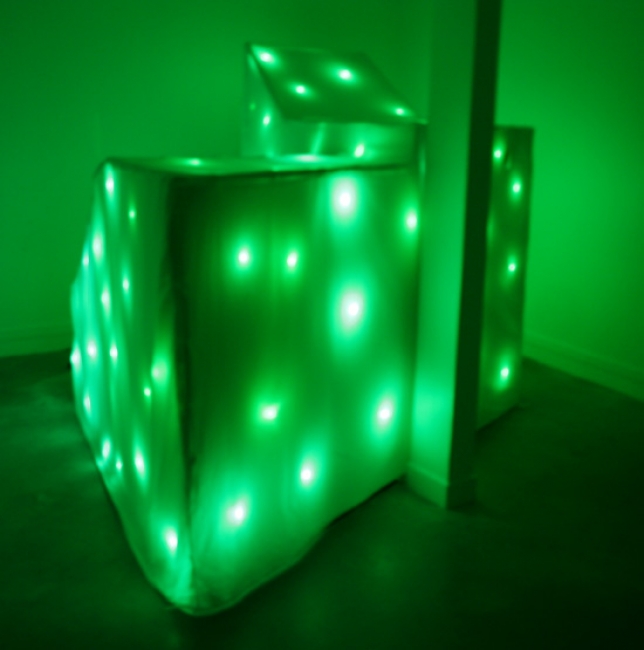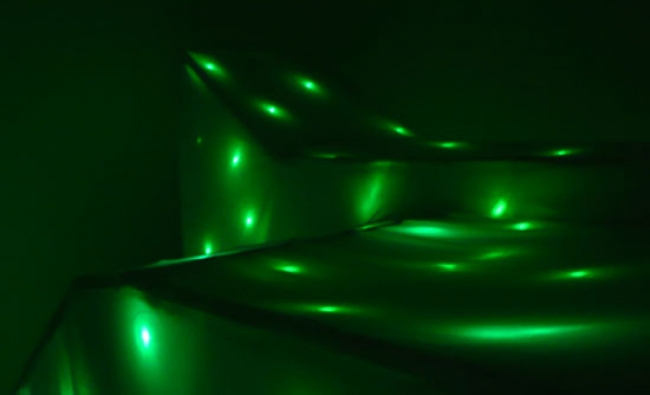Younès Rahmoun has been developing the Al-âna / Hunâ project (which literally means “now / here”) since 2006. The work changes shape according to the specific production contexts of the Ghorfa (“room” in Arabic). The Ghorfa piece was inspired by a small room located under the staircase of the family house in Tetouan, in which the artist used to withdraw. It started with a first study of a model and drawings which preceded the production of the work at a life-size scale. In reproducing this space of just a few square meters as an installation, Younès Rahmoun shared his intimate and personal universe.
For Ghorfa_3, Al-Âna / Hunâ, created in 2007 on the occasion of his presentation with Synesthésie (exhibition space dedicated to digital arts in Saint Denis / Paris), Younès Rahmoun proposed an interactive version of the work. Conceived from two layers of fabrics - opaque inside and transparent outside - the work reacted to the presence of the visitor thanks to a sophisticated program controlling an electronic system made up of 99 green diodes and motion sensors.
Invited to penetrate in the Ghorfa, after removing the shoes as is customary in the Muslim tradition when entering a sacred space, the visitor may sit on a small cushion on the floor. There, in the most complete darkness, he can experience a state of introspection and meditation. This state manifested outside the installation thanks to the luminous intensity of diodes which varied according to human motion, intensifies as the movements reduce.
The work induces a certain approach of spirituality through the symbols of the Islamic religion: the number of diodes evokes the 99 names of God, the installation itself is turned towards Mecca and the green light is a reminder of Islam. Although, for the artist this colour was rather intended to be the symbol and the colour of peace and of life than the colour of Islam. Neither hot nor cold, this green is related to an inner paradise, to the awakening and to faith. Thus, Younès Rahmoun wishes to lead the public to feel the singular and immaterial aspect from the experience of their presence in the world, defined by the artist as being here and now.
Vérane Pina
Translated by Valérie Vivancos



Follow us on: